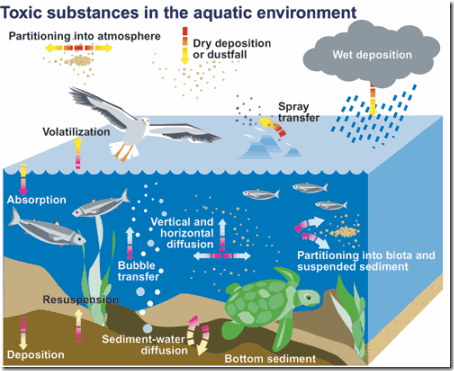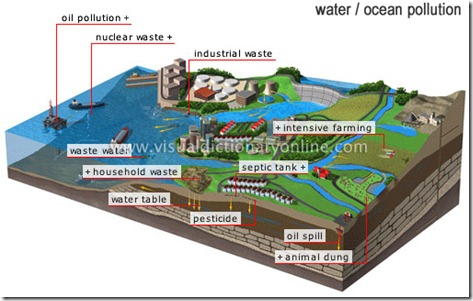Hazardous materials :
Hazardous substances, lead hazardous substances, stated dangerous goods and combustible liquids are examples of hazardous materials classified according to their relevance to workplace health and safety. Materials are classified as hazardous substances if they meet the National Occupational Health and Safety Commission’s Approved Criteria for Classifying Hazardous Substances. Materials are also classified as hazardous substances if their name appears in the NOHSC publication titled "List of Hazardous Substances" and are found above the stated cut-off concentrations in that publication. Hazardous materials, if not stored or handled correctly, can cause harm to workers, members of the public, property and the environment due to their physical, chemical, and biological properties. Hazardous materials include many commonly found industrial, commercial, pharmaceutical, agricultural and domestic chemicals.
Examples of some hazardous materials include:
• paints
• drugs
• cosmetics
• cleaning chemicals • degreasers
• detergents
• gas cylinders
• refrigerant gases
• pesticides
• herbicides
• diesel fuel
• petrol
• liquefied petroleum gas
• welding fume.
Hazardous substances are chemicals and other substances including most dangerous goods for which a manufacturer or importer must prepare, amend, provide and review a Material Safety Data Sheet (MSDS). Hazardous materials can cause adverse health effects such as asthma, skin rashes, allergic reactions, allergic sensitisation, cancer, and other long term diseases from exposure to substances.
Material Safety Data Sheets (MSDS)
An MSDS is a document containing important information about a hazardous substance and must state:
• a hazardous substance’s product name
• the chemical and generic name of certain ingredients
• the chemical and physical properties of the hazardous substance
• health hazard information
• precautions for safe use and handling
• the manufacturer’s or importer’s name, Australian address and telephone number.
The MSDS provides employers, self-employed persons, workers and other health and safety representatives with the necessary information to safely manage the risk from hazardous substance exposure. It is important that everyone in the workplace knows how to read and interpret a MSDS.
Access to MSDS
Access to a MSDS can be provided in several ways including:
• paper and microfiche copy collections of MSDS with microfiche readers open to use by all workers
• computerised and internet MSDS databases.
The register of MSDS should be used as an information tool to make sure everyone is involved in managing hazardous substances exposure at the workplace.
A MSDS should be reviewed whenever there is:
• a change in formulation which:
· affects the hazardous properties of the substance
· alters the form, appearance or mode of application of the substance
• a change to the hazardous substance which alters its health and/or safety hazard or risk
• new health and/or safety information on the hazardous substance such as exposure standard changes or a substance previously considered not harmful is now established to be harmful (e.g. carcinogenic)
• at least every five years. In respect of MSDS and labels, employers and self-employed personsmust:
• Obtain an MSDS of a hazardous substance from the supplier.
• Keep a register containing a list of all hazardous substances used at the workplace and put a copy of any MSDS obtained in the register.
• Take reasonable steps to ensure the MSDS is not changed other than by the manufacturer or importer.
• Keep the MSDS close to where the substance is being used.
• Ensure a label is fixed to a hazardous substance container.
• Ensure warnings are given about enclosed systems containing hazardous substances. Retailers are not required to distribute MSDSs. However, if a hazardous substance is purchased from a retailer, and the substance is for use at a workplace, an MSDS can be requested from another supplier of the hazardous substance such as the manufacturer or importer. In certain circumstances a supplier must provide copies of the MSDS to the workplace and fix a label to the containers of all classified hazardous substances because the substances:
• are on the National Occupational Health and Safety Commission (NOHSC) List of Designated Hazardous Substances
• on the designated list and are contained in a substance above a certain concentration
• meet the Approved Criteria (because of health effects). More information about MSDS is provided in Section 1 of the Hazardous Substances Advisory Standard 2003 (now known as a Code of Practice).
The format and content for a MSDS used in Australia is set out in the ‘National Code of Practice for the Labelling of Workplace Substances’. Employers can also ask the supplier of a hazardous substance for a 'National Industrial Chemicals Notification and Assessment Scheme (NICNAS) summary report' which provides more detailed advice about health hazards and control measures. Labelling and decanting Suppliers, employers and self-employed persons have specific labelling obligations for all hazardous substances containers in the workplace.
Label :
The label must be in English and contain the following:
• name of the product
• risk and safety phrases – as stated in NOHSC’s document entitled ‘National Code of Practice for the Labelling of Workplace Substances’ that gives information about the substance’s or lead’s hazards
• chemical names of particularly hazardous ingredients
• chemical or generic names of certain other ingredients.
If the manufacturer has amended a MSDS, the label should be changed to ensure that it is consistent with the information in the amended MSDS.
Containers of decanted hazardous substances at the workplace must be labelled with the product name and basic health and safety information (risk and safety phrases) from the supplier’s label. More information about labelling and decanting is available in Section 2 of the Hazardous Substances Advisory Standard 2003 (now known as a Code of Practice).
Health effects from hazardous substances in workplaces It is important when using hazardous materials in the workplace they are properly controlled if they are:
• toxic
• harmful
• corrosive
• irritant
• sensitising
• carcinogenic (causing cancer)
• mutagenic (causing genetic damage)
• teratogenic (causing abnormalities of the foetus).
Some of the health effects of exposure to hazardous materials include:
• skin irritation
• occupational asthma
• systemic chemical poisoning
• chemical burns from corrosives
• cancer.
Factors that determine whether illness or disease occurs include:
• amount and route of exposure
• simultaneous exposure to other hazardous substances
• sensitivity to the substance’s effects.
Some of the ways hazardous materials can enter the body include:
• breathing in (inhalation)
• skin contact (where skin is the target organ)
• absorbed through the skin and mucous membranes of the eye
• accidentally swallowed by eating or smoking with contaminated hands
• accidental injection through the skin.
These health effects can be acute, resulting from short-term (usually high) exposure, or chronic, resulting from long term (often low level) exposure over a period of time. Chronic effects may not occur for many years and the cause is often hard to identify.







0 comments:
Post a Comment